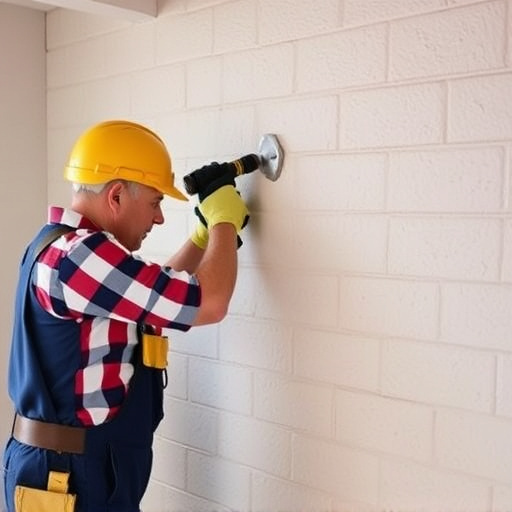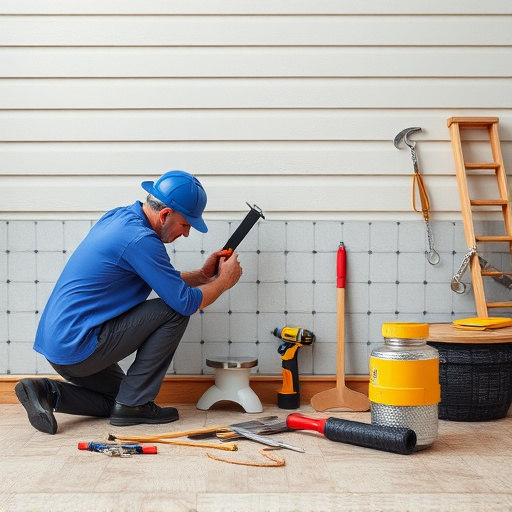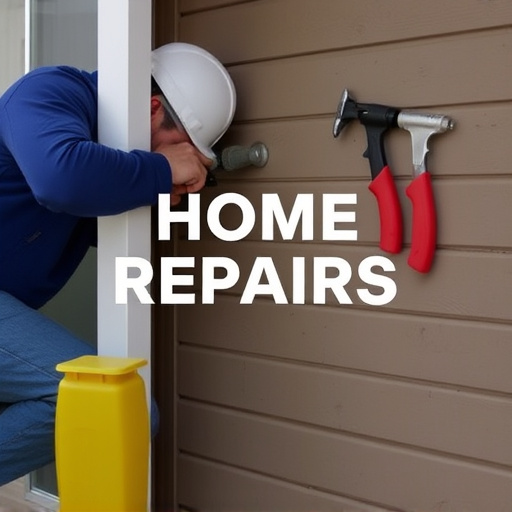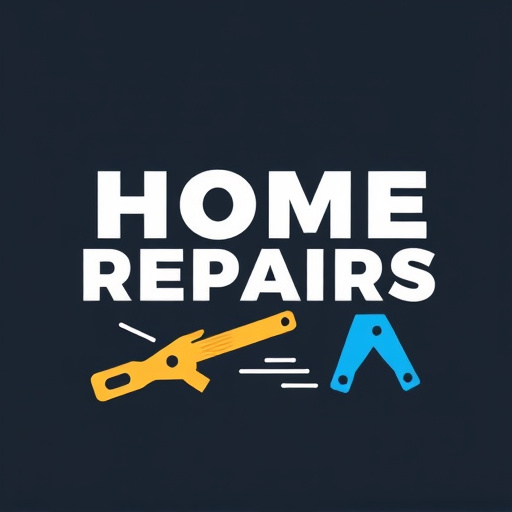Nail guns, powerful tools for construction and woodworking, require safe handling by professionals and handyman. Essential Handyman Tips include regular inspections, protective gear, clean work area, proper ventilation, and knowledge of settings. Prevent accidental discharges by maintaining tools, inspecting for damage, and never pointing the gun at anything but the target. Regular maintenance and inspection enhance accuracy and prevent accidents, making nail guns vital for any handyman's toolkit.
Nail gun safety is paramount for handymen, as accidental discharges can cause serious injuries. This article offers invaluable handyman tips on understanding nail gun basics, identifying common causes of accidents, and implementing best practices for safe operation. By learning about essential components, risk factors, and regular maintenance, you can significantly reduce the chances of an unfortunate incident. Stay safe and efficient with these crucial nail gun safety guidelines.
- Understanding Nail Gun Basics: Essential Components and Functionality
- Common Causes of Accidental Discharges: Identifying Risk Factors
- Safety Measures: Best Practices for Handymen to Prevent Accidents
- Regular Maintenance and Inspection: Ensuring Safe Nail Gun Operation
Understanding Nail Gun Basics: Essential Components and Functionality

Nail guns are powerful tools commonly used by professionals and handyman alike for various construction and woodworking tasks. Understanding their basics is crucial in ensuring safety and preventing accidental discharges, which can cause severe injuries. These tools function by compressing air to drive nails into wood or other materials. The key components include a compressor, an air line, a trigger mechanism, and a nail magazine.
The handyman tips for safe operation involve regularly inspecting the tool for any damage, ensuring proper ventilation in work areas, and wearing protective gear such as safety glasses and gloves. Familiarizing oneself with the gun’s settings and range allows for controlled use, minimizing the risk of misfire or accidental penetration beyond the desired depth.
Common Causes of Accidental Discharges: Identifying Risk Factors

Accidental discharges from nail guns are often a result of careless handling or environmental factors. Common causes include misalignment of the trigger and firing mechanism, where even a slight nudge can set off a shot. Another significant risk factor is loose or damaged nails that can get caught in the gun’s mechanism, causing an unintended discharge when the tool is triggered.
Handyman tips for avoiding these hazards involve regular inspection of the nail gun to ensure all components are securely fastened and functioning correctly. Maintaining a clean work area free from debris and foreign objects also minimizes the risk of accidental discharges. Additionally, proper storage of the tool when not in use, especially in a secure location away from children or untrained individuals, is an essential preventive measure.
Safety Measures: Best Practices for Handymen to Prevent Accidents

To ensure safety while using nail guns, handymen should adhere to best practices designed to prevent accidents. First and foremost, always wear personal protective equipment (PPE), including safety glasses to shield your eyes from flying debris and heavy work gloves to protect your hands. Regularly inspect the nail gun for any signs of damage or malfunction before each use; if issues are found, address them promptly to avoid unexpected discharge.
Keep a firm grip on the trigger during operation, avoiding rapid or accidental pulls. Maintain a safe distance from the target area, ensuring no bystanders or pets are nearby to reduce the risk of injury. Additionally, never point the nail gun at anything other than your intended surface; keep it aimed downrange to prevent discharge in unexpected directions. Regularly clean and maintain your nail gun according to manufacturer guidelines to ensure optimal functionality and safety.
Regular Maintenance and Inspection: Ensuring Safe Nail Gun Operation

Regular maintenance and inspection are crucial handyman tips for ensuring safe nail gun operation. Before each use, check the tool for any signs of damage or wear, especially around the trigger mechanism and firing pin. Clean the gun thoroughly, removing all debris and dust that might interfere with its proper functioning. Lubricate components as per the manufacturer’s instructions to maintain smooth operation and reduce the risk of accidental discharge.
Inspecting nails and their feeders is equally important. Replace bent or damaged nails and ensure they are properly aligned in their magazines. A well-maintained nail gun not only enhances accuracy but also prevents accidents, making it a vital part of any handyman’s arsenal.
Nail gun safety is paramount for handymen to prevent accidental discharges. By understanding basic components, identifying risk factors, implementing best practices, and conducting regular maintenance, professionals can enhance their workplace safety. Adhering to these nail gun safety tips ensures efficient and secure nailing operations, making it a game-changer for anyone in the trades.
